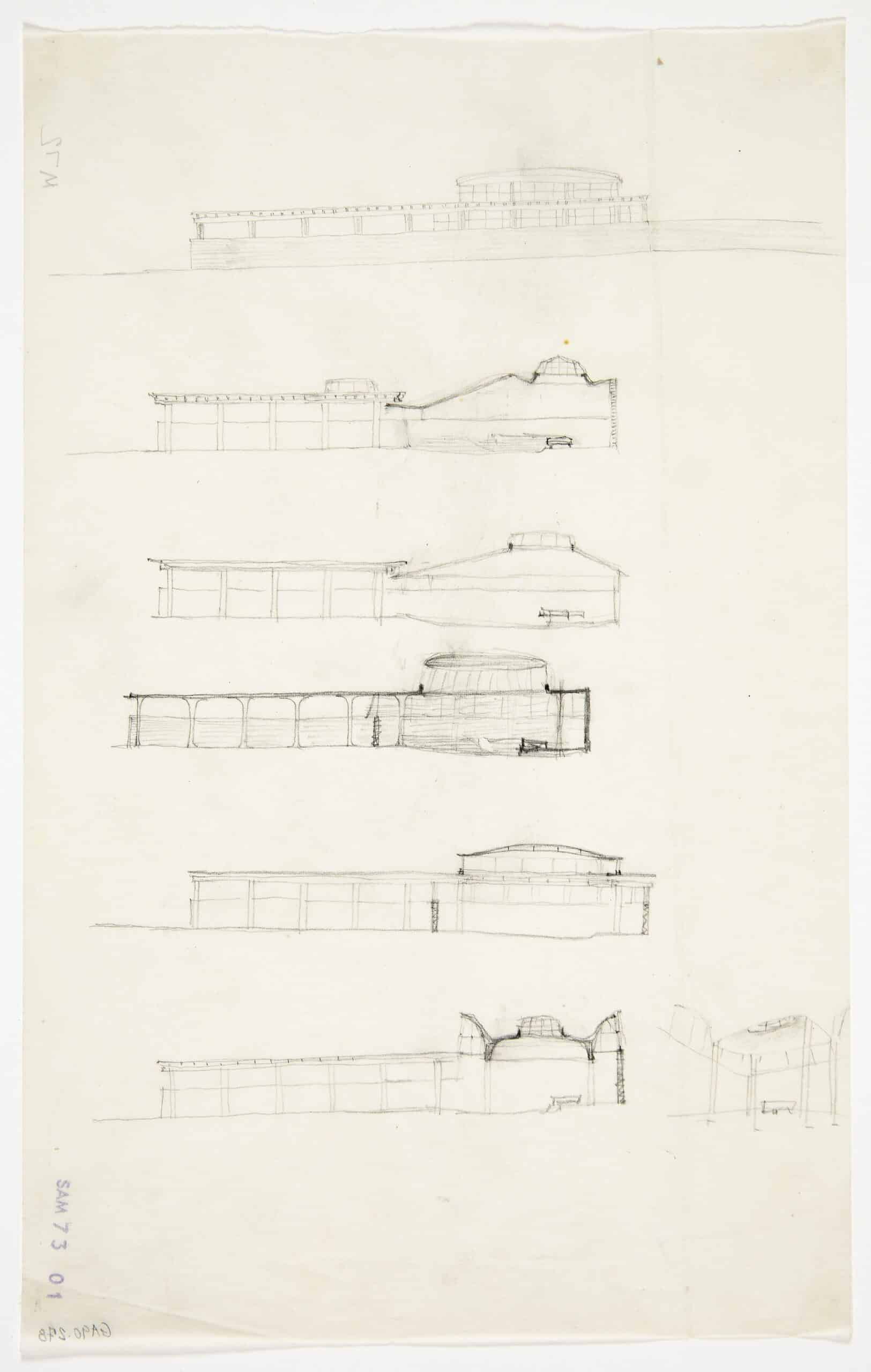Working with Asplund
Asplund’s office was two floors up in an old building in Regeringsgatan, behind the NK department store. There were civil engineers there and Asplund collaborated with them as well. They worked on regional planning.
Asplund’s office was a very smart room, a chapel for meditation you might say. It was done out in white and grey and the drawing table had a dark frame round grey Linoleum on top of a wooden board. He had designed the table himself. It was a very interesting structure; it doubled as writing desk and drawing table.
At the back of the office there was a dark room with a big filing cabinet. Asplund had a sense for filing and was interested in it. I had the job of filing material from the Stockholm Exhibition. I did my best and entered in the book which drawings we had arranged.
There was a man in the office who did everything, Zetterberg I think his name was. Then there was Viking Gӧransson and then Sven Ivar Lind often came in as well. There was also an associate called Curt Laudon who came of an old family of the Austrian nobility. But first and foremost there was Nils Einar Eriksson.
Asplund sat in his own room, at one end of the table, working by himself, and then he would come out and ask what the others had done. If you’d too little or said that you’d been thinking, he didn’t like it. That wasn’t good enough. But we never disagreed. He laughed a lot. He would sit with us too. He sat next to me and sketched and sketched and we talked to each other. He often said: ‘You must sketch as well, now let’s have your idea!’ Then he would come up with his idea and we would compare them. We never worked on the same sketch. But this was all small things, structural details. A lot of it was thrown away as work progressed.

Asplund treated the associates like equals. You felt you were working together. Everyone had to join in and so his utmost. He expected that. You were important, you never felt that you were unnecessary. He worked hard himself and he expected his associates to do the same. He was punctual and reliable and I thought he was like a father to me. He was careful in all things but never mean. The hard pencil he used is a sign of precision. Accurate to half of one-tenth a millimetre. He measured and made comparisons with measurements in the room, the height of a door or window or something else. He would dart over to a corner of our drawing office where all the heights were measured and entered. He would look at the marking points – two metres, two-and-a-half metres and so on.
And the details! If it was a chair, a table or a lamp, it would often drive you mad, the way he kept altering screws and details. But afterwards you’d feel satisfied. There was a point in his alterations. He didn’t alter things for the sake of altering. I felt that Asplund was right about the details but I know that there were other associates – Nils Einar Eriksson, for example – who were very disgruntled with his way of continually improving the things they did. We were often short of time. At Norr Mӓlarstrand we entered a competition for a housing development and right up to the last minute Asplund kept changing things. He sat up all night and his wife kept him supplied with coffee and buns. I delivered the entry and I had to snatch it away to get it there in time.
Colours were another important thing where Asplund was concerned. He often used an artist to draw perspectives. I couldn’t paint as well as he wanted and I couldn’t draw perspectives either. But Asplund always had a perspective view of every detail, if it was a corner or a roof overhang, then you always had to do a perspective drawing. Later, when it came to bigger perspectives and we’d only done small sketches, an artist would come in. Asplund would stand behind him saying: ‘You’ve got to have more yellow, here it’s got to be red.’ He never did a perspective when I was there. He sketched in perspective, but others had to fo the perspectives the way he wanted them.
The really distinctive thing about Asplund’s way of working was that he always visualised the room. The proportions meant everything. They had to make a living impression. No dry abstraction. The function was self-evident, but every part had to speak, if it was a door or a window or a piece of furniture.
Everything had to speak to everything else.
Asplund had this drive to model things. It could apply to anything. He was introspective. He would often sit next to you without saying a word. He turned in on himself and started sketching. I must say he was an unusually committed architect. He wanted to bring heaven down to earth and lift the earth up to heaven.
Excerpted from an interview published in Christina Engfors, ed., E. G. Asplund: Architect, Friend and Colleague (Stockholm: Arkitektur Förlag, 1990).
